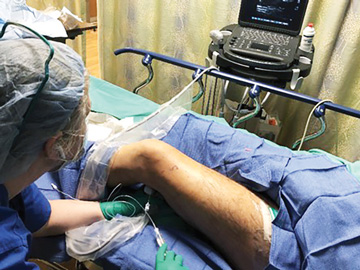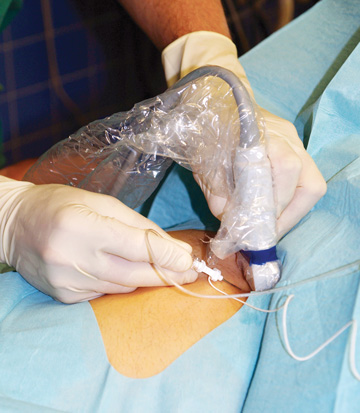The first step to achieve buy-in for adding regional anesthesia is to understand the goals and pain points of the providers you’re trying to convince. Their motivation could be as simple as a desire to have patients in less pain. Other
drivers could include wanting to reduce side effects from general anesthesia, a plan to introduce a new service line such as hand surgery, a desire to run more environmentally friendly operating rooms by using fewer anesthetic gases, an
effort to get more positive patient testimonials or an attempt to make a direct response to the opioid crisis.
Pushback can come from many directions: Surgeons who haven’t worked with anesthesiologists who know how to place them; anesthesiologists who don’t know how to place them but work with surgeons who want them done; and nurses who
are untrained in the practice and therefore uncomfortable with the prospect.
“As there is a push toward more regional anesthesia in outpatient settings, facilities are feeling a competitive pressure to introduce a block program,” says Edward R. Mariano, MD, MAS, FASA, a professor of anesthesiology and perioperative
and pain medicine at Stanford (Calif.) University School of Medicine. “To take advantage of this opportunity, you have to find the right hook.”
To that end, Nadia Hernandez, MD, an associate professor of anesthesiology and director of regional anesthesia and perioperative ultrasound at McGovern Medical School in Houston, researches the surgeons and facilities in advance so she’ll
have responses ready to counter the potential objections to a block program she expects them to have.
“Physicians who own an ASC, for example, are going to want to hear how you can save money overall despite the added expense of blocks, which aren’t reimbursed well,” says Dr. Hernandez, who is also regional anesthesia and
perioperative ultrasound chair at McGovern. “There are legions of pluses to peripheral anesthesia, so I research the person I’m going to be speaking to first and talk to them about the benefits I think would be most meaningful
to them.”
Data is king, notes Karina Gritsenko, MD, program director of regional anesthesia and acute pain medicine fellowship and an associate professor of anesthesiology at Albert Einstein College of Medicine in New York City. She says documentation
showing surgeons numeric evidence of shorter PACU times, drops in post-op opioid prescriptions and hikes in patient satisfaction scores that are associated with regional anesthesia is “incredibly powerful toward getting buy-in.”
Surgeons have been doing what they’ve been doing for a long time, points out Dr. Gritsenko. “The right technique is to listen first and not be a bull in a china shop, no matter how passionate you are about adding a block program,”
she says.
Because you’ll likely wind up getting rejected a time or two before a surgeon finally agrees to trying blocks for the first time, it’s important to make sure initial procedures are successful. “Doctors almost always say ‘No’
the first time, so make sure your first block doesn’t fail,” says, Dr. Gritsenko.
Inevitably, however, there will be cases in which complications occur. Dr. Hernandez suggests that anesthesia providers prepare for them, own their part in the event and learn how to manage the situation when it arises. Suppose, for example,
the provider thinks a surgeon’s tourniquet could have been a factor in a failed block. Instead of blaming the surgeon, the provider could say the causes of the failed block were likely multifactorial and that they’ll investigate
the potential role their technique might have played. “Accepting a little bit of responsibility goes a long way toward keeping a block program alive,” says Dr. Hernandez.
.svg?sfvrsn=be606e78_3)


.svg?sfvrsn=56b2f850_5)